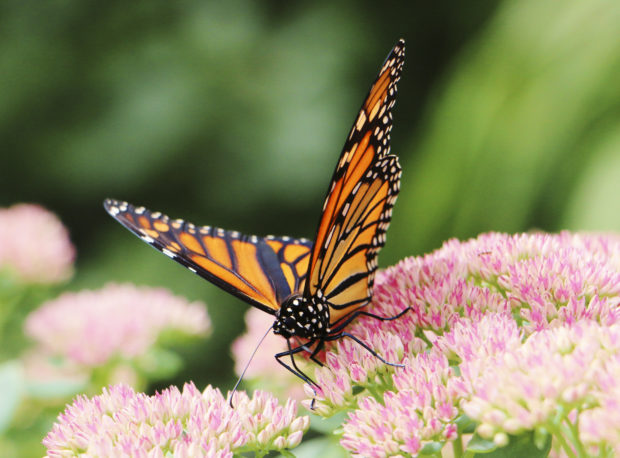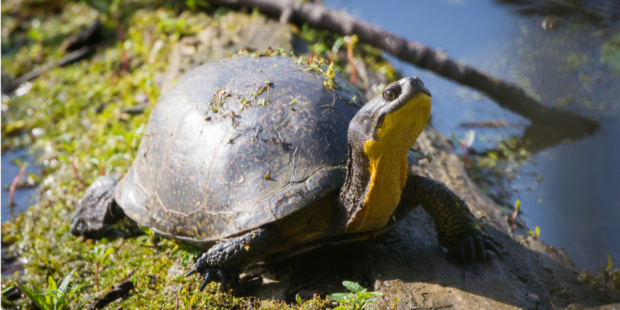We have much more to do and your continued support is needed now more than ever.
5 Species that Need the Recovering America’s Wildlife Act

America’s wildlife are in crisis — with more than one-third of all species at-risk or vulnerable to potential extinction in the decades ahead. Thousands of species are losing ground fast—and urgently need proactive, local conservation efforts. The first step towards making those efforts to save wildlife in jeopardy began last week with the introduction of the bipartisan Recovering America’s Wildlife Act which would provide states and communities the resources they need to meet this challenge and save our wildlife in crisis!
Please take 30 seconds now to act for wildlife in crisis.
5 Species Under Threat
Whooping Cranes
As many as 20,000 whooping cranes were once found throughout North America. But by 1941, habitat loss and unregulated hunting—in part for the birds’ feathers—reduced the whooping crane’s numbers to less than two dozen individuals. Today, the bird has made a significant comeback, with approximately 400 whooping cranes now found in the wild. Efforts are underway now to reintroduce and establish a migratory population in Wisconsin and non-migratory population Louisiana. But the species remains at very real risk of extinction.
One of the most significant threats to the whooping crane is the loss of freshwater flowing to its winter home on the Texas coast. A mix of salt and freshwater is critical for blue crabs, the mainstay of the whooping crane’s winter diet. The Recovering America’s Wildlife Act would allow the Texas Parks and Wildlife Department to take proactive steps to ensure that Texas’ rivers continue to flow to the coast, even as the state’s population grows and the climate warms.

Northern Flying Squirrel
These squirrels are actually gliders, spreading their four feet wide to expand a nifty “parachute” of loose furred skin (called a patagium) to glide up to 100 meters. Northern flying squirrels need big decaying trees for nest homes and plentiful supplies of nutritious nuts, fruits, and fungi in the soil. Passing the Recovering America’s Wildlife Act will directly help flying squirrels by funding efforts to protect against habitat loss in places such as West Virginia, Virginia, Tennessee, and North Carolina, where distinct subspecies of the Northern flying squirrels live in the Appalachian Mountains.
Monarch
Butterflies are certainly beautiful, but they’re so much more: flowers need these pollinators and songbird chicks rely on caterpillars for food. Sadly, almost a fifth (17 percent) of the roughly 800 butterfly species gracing the United States are at risk of extinction. Even widespread species like the familiar monarch butterfly are losing breeding habitat in the United States. Intensifying farming practices, including herbicide use, eliminates their only caterpillar host plant, milkweed, and the nectar plants used by adult butterflies. The Recovering America’s Wildlife Act will give butterflies a safety net, in part by allowing state wildlife agencies to promote and plant wildflowers that support pollinators like butterflies.

Spotted Skunk
Like a gymnast of the animal world, the spotted skunk stands on its front paws when threatened. They’re welcomed on farms, as good mousers and natural insect controllers. And even though these skunks have declined by as much as 90 percent in some parts of their range, there is very little support for local wildlife biologists to find out why. The Recovering America’s Wildlife Act would give states the funds they need to investigate to the mystery of why the spotted skunk is declining and to implement solutions, once identified.
Turtles
Turtles are naturally equipped for a long life, with slow metabolisms and predator-proof hard shells. But those gifts aren’t effective against roads slicing through habitats and pollution that destroys healthy streams, ponds, and wetlands. Blanding’s turtles, wood turtles, and spotted turtles are three species that are facing a range of threats to their survival. These declining species inhabit parts of the central and eastern U.S. and Canada. But state wildlife agencies and partners are ready to step up with plans to set these turtles on a path to recovery, by investing in wildlife crossings, protecting streams and other measures.

How You Can Help
The Recovering America’s Wildlife Act will help recover thousands of wildlife species through proactive, collaborative, on-the-ground efforts. This approach and legislation is unique because it calls for early action to save struggling wildlife, rather than waiting until species are on the brink of extinction to spur action. In the previous Congress, the Recovering America’s Wildlife Act had more than 100 co-sponsors.
“We owe it to our children and grandchildren to prevent these species from vanishing from the earth,” said Collin O’Mara, president and CEO of the National Wildlife Federation. “Recovering wildlife is a win-win-win: strengthening our economy, improving public health, and making communities more resilient.”






















